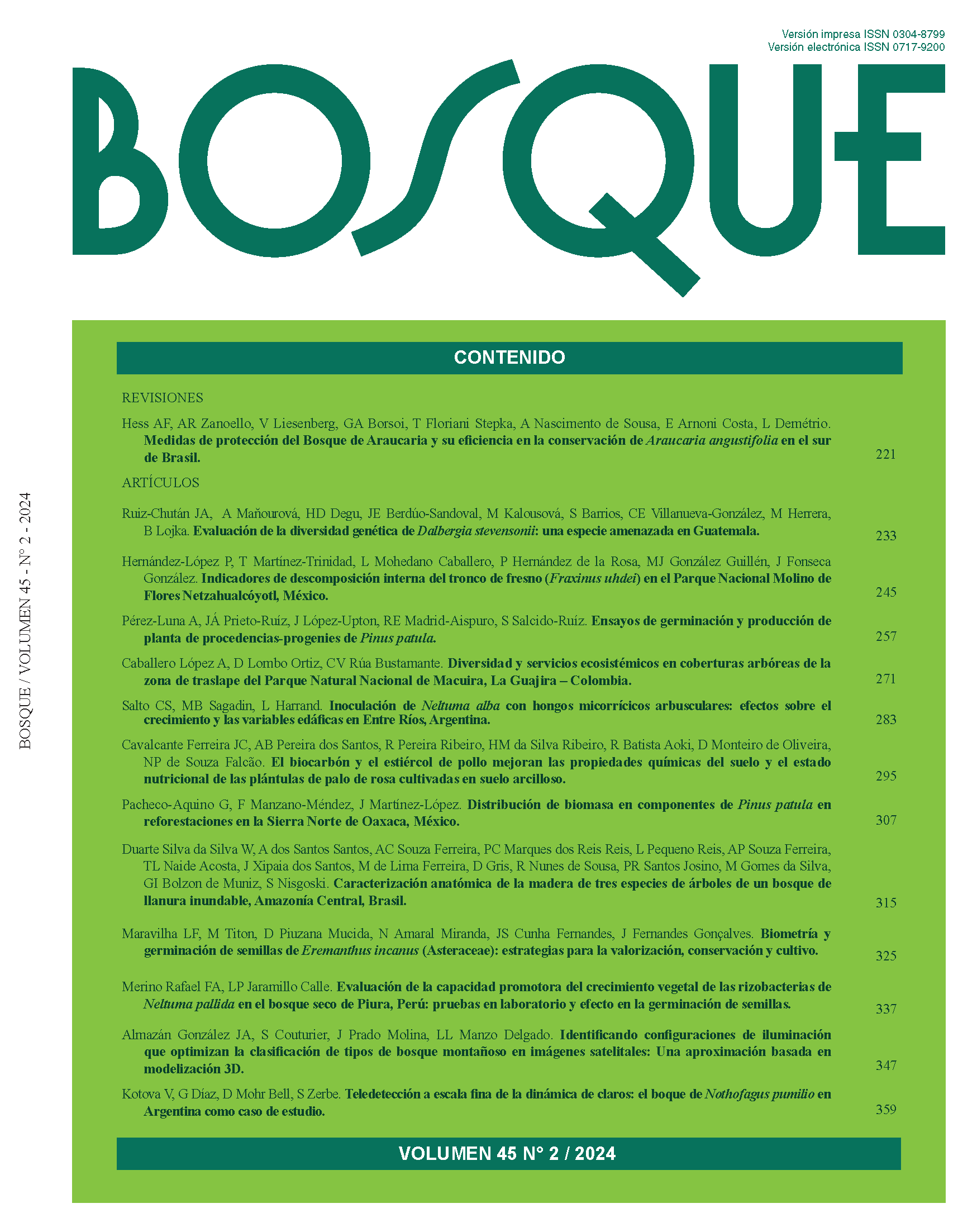Caracterización anatómica de la madera de tres especies de árboles de un bosque de llanura inundable, Amazonía Central, Brasil
Contenido principal del artículo
Resumen
La estructura anatómica de la madera de las especies de árboles que se encuentran en los bosques de llanuras aluviales puede sufrir alteraciones debido a las fluctuaciones estacionales en los niveles de agua, afectando potencialmente el volumen de madera disponible para el manejo forestal sostenible de las áreas inundadas. Así, este estudio tiene como objetivo caracterizar las características anatómicas de Hura crepitans, Ocotea cymbarum y Eschweilera albiflora, evaluando si estas características difieren de las descripciones reportadas en estudios previos de las mismas especies realizados en otros ambientes. Se recolectaron muestras de seis árboles adultos de cada especie en dos reservas de desarrollo sustentable (RDS), Mamirauá y Amanã, ubicadas en la región media de Solimões, estado de Amazonas, utilizando un método no destructivo con barrenador incremental. Se tomaron dos muestras en cada una de tres alturas diferentes (0,30, 1,30 y 2,30 m). Se determinaron descripciones microscópicas de las especies (porosidad, parénquima axial, radios, fibras y elementos de los vasos). Se utilizó ANOVA factorial de dos vías seguido de la prueba post hoc de Tukey para verificar las diferencias en los elementos anatómicos de las muestras de madera recolectadas en las tres alturas. La madera de H. crepitans tiene porosidad difusa, predominio de vasos solitarios, difusos en agregados y escaso parénquima axial, radios no estratificados y fibras libriformes. La madera de O. cymbarum tiene vasos solitarios en múltiplos radiales, parénquima axial vasicéntrico, radios sin pisos y fibras septadas. La madera de E. albiflora tiene agrupaciones radiales de vasos, parénquima bandeado y radios sin pisos. Este estudio confirma descripciones previas de la especie, revelando que las características anatómicas permanecen sustancialmente constantes en todo el tronco.


 https://orcid.org/0000-0002-0090-7564
https://orcid.org/0000-0002-0090-7564